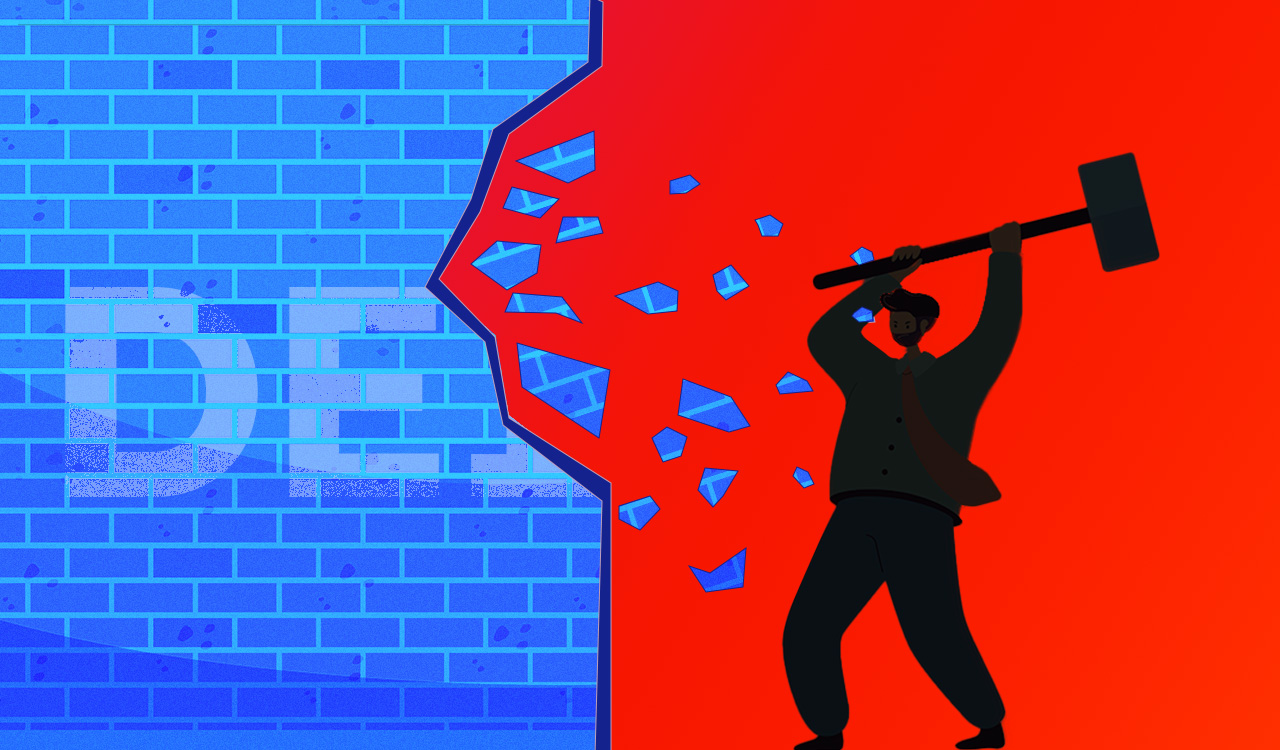If Walmart and Target are canaries in the retail coal mine, maybe there’s a third canary in the economic coal mine named Elon Musk who recently said we are already in a recession. Think what you will about Mr. Musk and his eccentric and stratospheric imagination … maybe he’s right. My friend Richard Baum, Managing Partner of Consumer Growth Partners, reminded me that “It’s pretty common knowledge that by the time the government officially declares that we are in a recession, the country is usually on its way out of it. Not real genius on Elon Musk’s part for that observation.”
Financial Chaos
The crash of Walmart and Target’s first-quarter operating margins unveiled last week (well below what their respective CEOs expected) with only modest sales gains, led to their biggest single-day stock market declines since Black Monday in 1987. It also bled through the retail sector in general, driving selloffs. Worse, as reported by the NYT, last week’s selloff of both the Dow and S&P 500 “nearly ended the bull market that began after the start of the pandemic. It has been decades since stocks have fallen for such a prolonged period. The Dow Industrials notched their eighth straight weekly loss, the longest streak since 1932, near the height of the Great Depression.” Yikes! And yikes again. “The S&P 500 and Nasdaq had their seventh straight weekly loss, their longest such streak since 2001, after the dot-com bubble burst. All three indexes finished the week down at least 2.9 percent,” continued the report.
Just as we were unable to recognize the Covid canary, we absolutely did not see a supply chain breakdown that continues to this day. Likewise, we didn’t see the Ukraine canary with the Russian invasion, which is disrupting the global supply as well as distribution of oil and agricultural commodities.
The Canaries
Walmart and Target are canaries since roughly 70 percent of GDP growth is consumption. And since retailers are on the front line, so to speak; and these two giants are bellwethers for the entire retail sector, one could make the case that when they lose oxygen (aka business) it is a recession foretold.
The pandemic wasn’t a canary until we realized it was, and much too late. In hindsight, if we had known how long and deep it would extend globally, and the level of disruption and destruction it would inflict, we could have prepared for it. Instead, we only reacted. And the blunt instrument we used to literally save our economy was a firehose of trillions of dollars directly into the hands of citizens and businesses to prevent another 2008 meltdown.
That playbook did maintain the economy on a slow growth trajectory. However, just as we were unable to recognize the Covid canary, we absolutely did not see a supply chain breakdown that continues to this day. Likewise, we didn’t see the Ukraine canary with the Russian invasion, which is disrupting the global supply as well as distribution of oil and agricultural commodities. Let’s keep going. There are multiple canaries staring us right in the face. We didn’t plan for the U.S. commitment of over $50 billion worth of weaponry and humanitarian aid to Ukraine (so far). And we didn’t anticipate China’s zero-Covid policy resulting in massive lockdowns, which have and will continue to disrupt global supply chains. On that front, we still don’t know the extent of the China factor that is exacerbating the ongoing post-pandemic supply chain mess.
Connecting the Dots
Long story short, consumers amassed over $2 trillion (just think about that) in their savings accounts from the Fed’s pandemic firehose with enough money left over for spending. But no one connected the dots to understand how supply chains were getting totally screwed up post-lockdown and how consumers would behave once they were liberated.
Retailers were totally inventory-challenged, mostly guessing about supply and consumer demand needs, and when and where the supply needed to be delivered. No surprise here. Businesses in general, and particularly retailers across all sectors, had much of their supply sitting in cargo ships offshore waiting their turn for days and weeks to unload in seaports. And then there was a shortage of trucks and truckers to distribute the goods. Furthermore, the goods sitting in those ships were dated quickly and ended up as irrelevant to what consumers wanted and needed once they started shopping again.
Misjudging where and what consumers would be spending, Walmart’s inventory increased by 32 percent and Target’s shot up 43 percent. The result? Too few or too many goods, or the wrong goods to meet the demands of consumers, flush with cash and higher wages. The next result? Inflation. The result after that? Rising costs for production, logistics and distribution of goods (particularly oil, gas, commodities, and groceries). And the final result? Rising prices and declining sales and profits. We’re in a negative feedback loop that, if it continues spiraling downward, will lead to a recession.
How can a recession be avoided? Theoretically by the Federal Reserve “artfully” raising interest rates to reduce demand, which seems counterintuitive as it also dampens growth, particularly in high-ticket items like home mortgages, automobile loans, and credit card interest. So, one could say that even if the economy does not slip into a textbook definition of recession with the GDP falling for two successive months, it is still a downturn that will have a significant impact on all consumers.
Chasing Inflation
How would you like to be Fed Chairman Jerome Powell who is expected to defeat inflation without causing a recession? Before Russia’s invasion and China’s zero-Covid policy, Powell stated that inflation would be transitory. However, as more and more unexpected global catastrophes began to unfold, he then recalibrated and said he would likely hike interest rates sooner and higher than originally thought necessary.
According to PIMCO, the inflation rate in March was about 8.5 percent, dropping to 8.3 percent in April, and back up to 8.54 percent in May. Kiplinger predicts the inflation rate will ease over the rest of this year but will likely end 2022 at a still high rate of about 6.3 percent. And in 2023 the rate should fall faster, down to 3.0 percent by the end of the year.
Consider this:
- The higher cost of housing will keep inflation rates elevated for some time to come. Gasoline prices and heating costs are likely to stay high for a good while because of the war in Ukraine, but they may plateau instead of continuing to climb.
- The prices of cars and trucks will also stay at a high level until the semiconductor shortage ends sometime next year.
- Continued spot shortages of various items will drive their prices up, adding to the overall inflation rate. The latest is a shortage of baby formula.
- Continued inflationary pressures will likely spur the Fed to keep hiking short-term interest rates. Short rates will likely reach 2.5 percent by the end of the year.
- The 10-year Treasury note has already risen to 3 percent in anticipation of the Fed’s hikes but may edge up further.
Retail Futures
How will all this impact the retail industry? Moody’s Investors Service said, “We expect sales to increase two to four percent, while operating profit is set to decline one to three percent over the next 12-18 months.” They lowered their outlook to negative from stable for the U.S. retail and apparel industry.
Granted those numbers are predictions, and since their crystal ball is full of more data and logic than mine, they may be close to accurate. My prediction is slightly more prosaic: Because we didn’t anticipate a cage full of canaries let loose on the world, we did not prepare for them. And by not connecting the dots to what these canaries symbolize and can disrupt, we are still racing to adjust and react to them. My take is less about the numbers and more about the strategic need to be prepared for the future, not catch up to it. Scenario planning aside, a lot of this is practicing good common sense.
Oncoming Trains
At the end of the day, most of the guesswork and action must come from the brilliant minds in the Fed. Hopefully if Powell raises rates “artfully” enough to contain and stabilize a potentially runaway inflationary spiral (as opposed to using a sledgehammer) we can avoid a deep recession. For the record, during the 1970s, when the inflation rate grew from 5.5 percent culminating at 14 percent in 1980, then Fed Chairman Paul Volker used a sledgehammer and in doing so, he slammed the U.S. into a recession that lasted through the decade.
And get this: Since mid-2021 through February 2022, the U.S. averaged an inflation rate of 5 percent. Do I hear an echo? In my opinion, with all of the unraveling still going on in the geopolitical world, the war in Ukraine, China’s lockdowns, continuing supply chain disruptions, ongoing worries about virus variants, inflation rising faster than wages, a cutback in consumer spending, and rising costs for businesses with reduced operating margins and profits — along with other chaotic parts of the global condition that I surely missed, Chairman Powell can be as “artful” and gentle as he wants. But honestly, if we are not already on the edges of Elon Musk’s stated recession, I believe it is inevitable. Retail leaders: To be forewarned is to be strategically forearmed.





